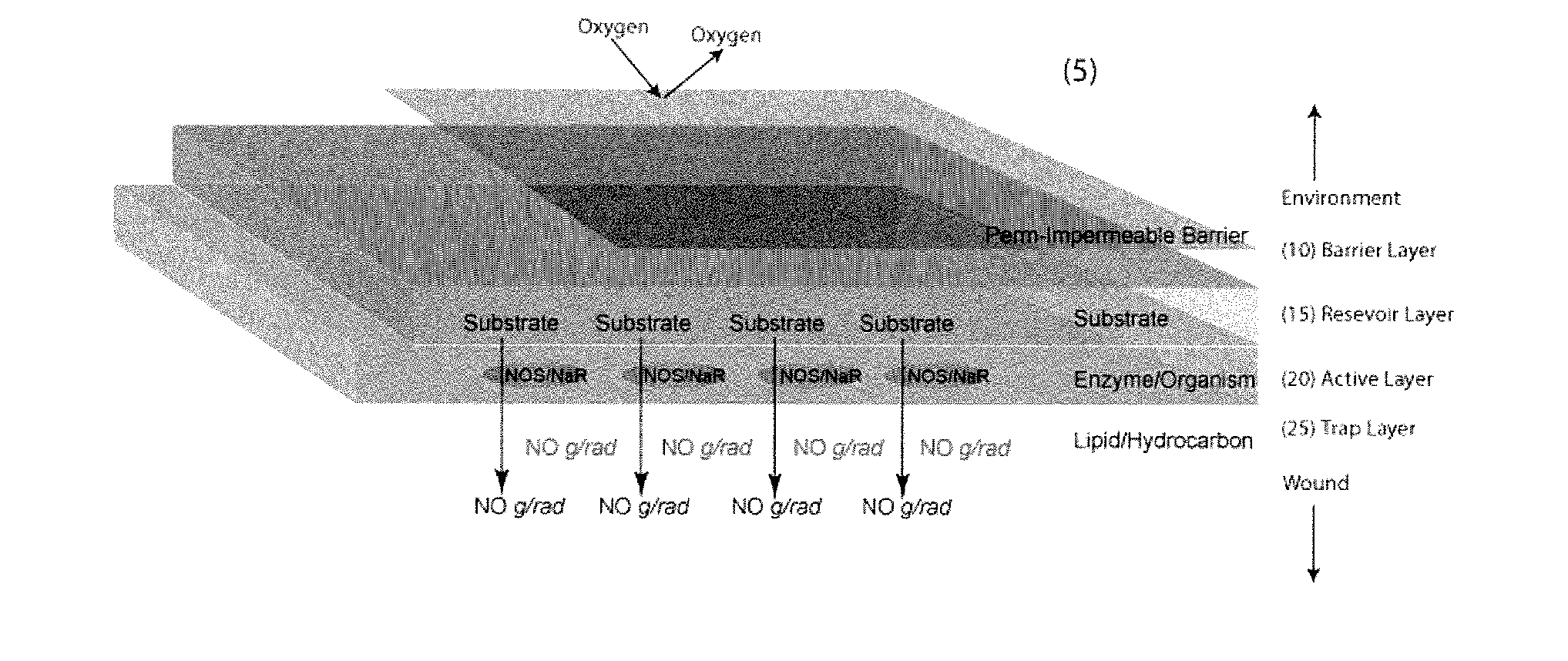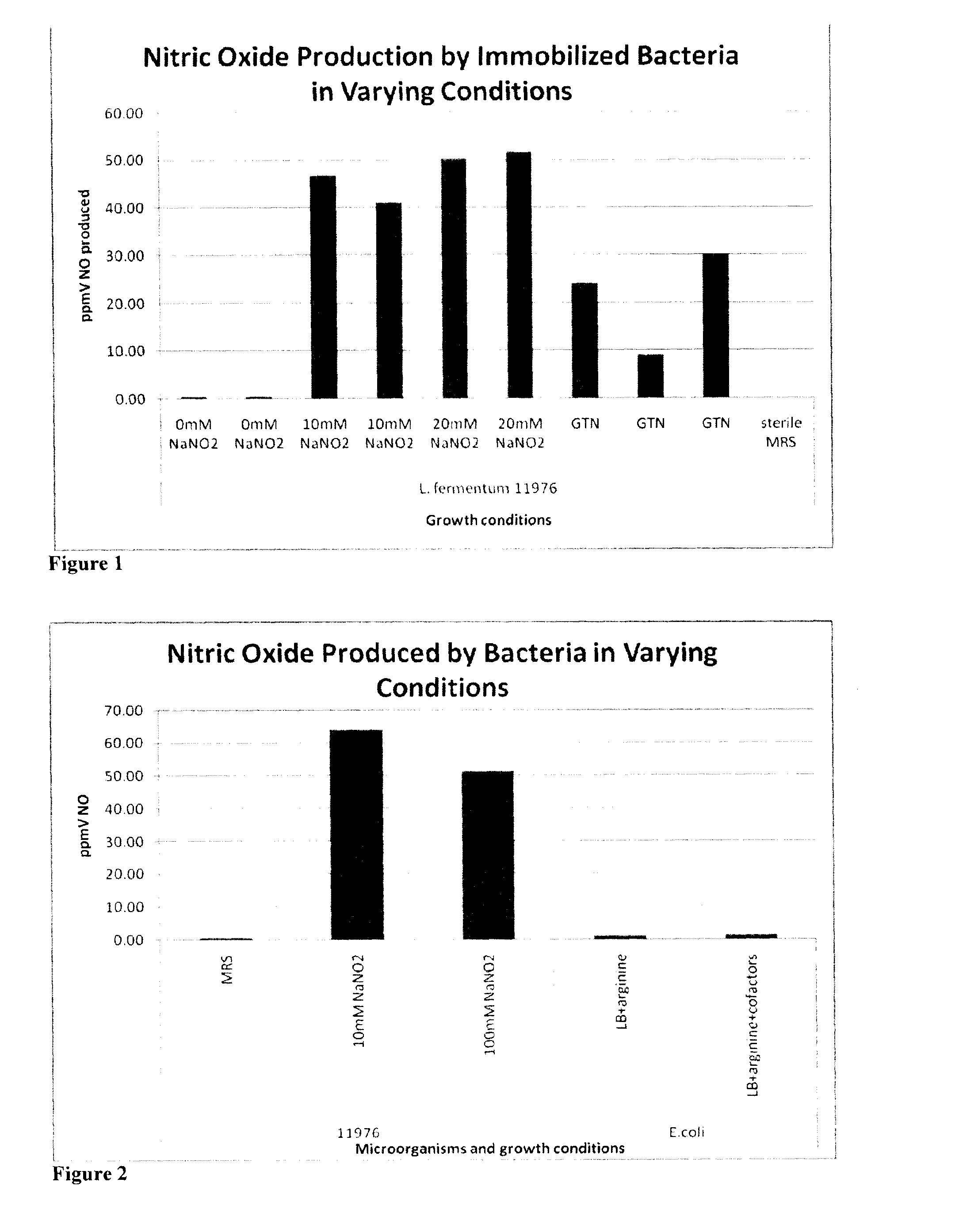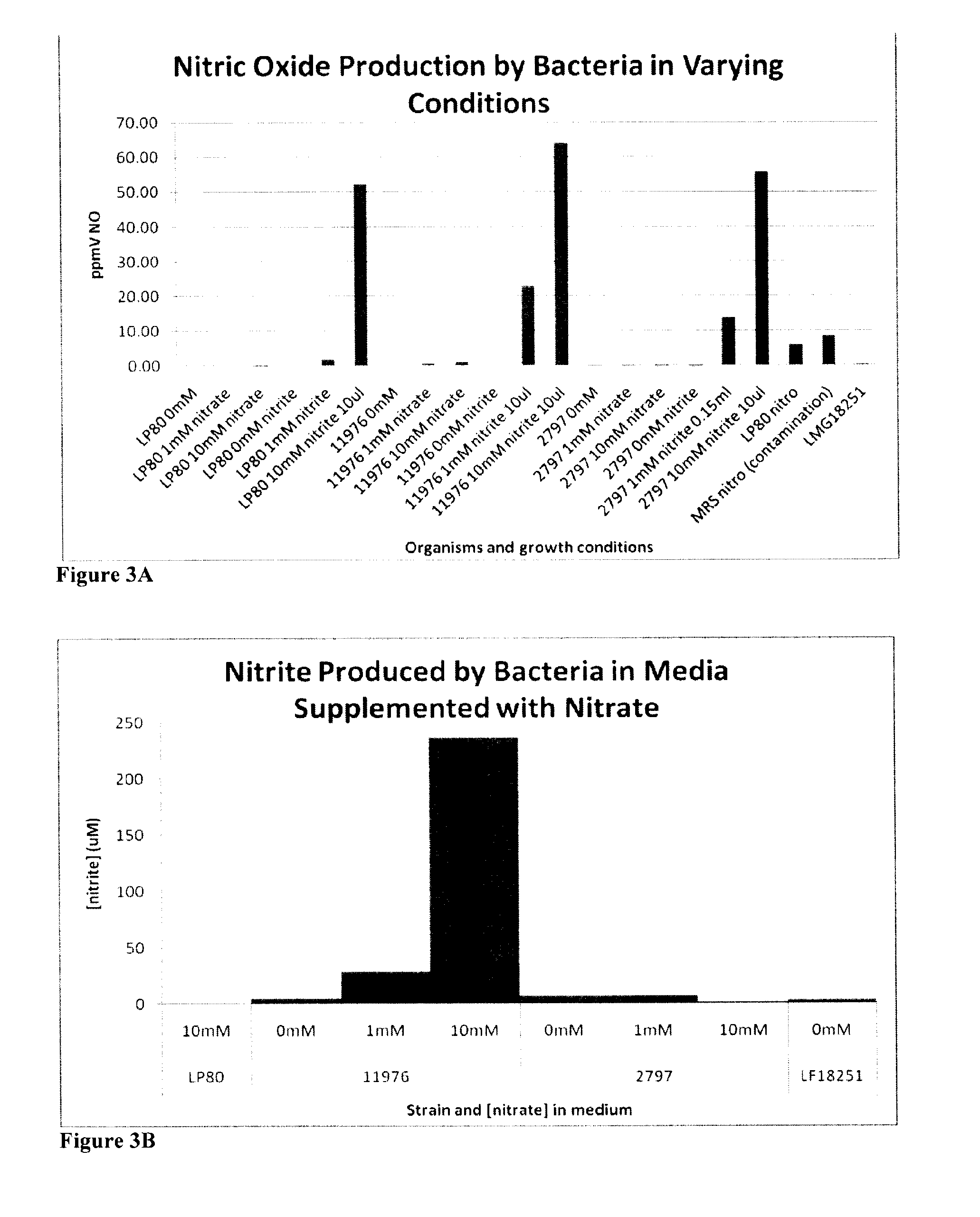Nitric Oxide Device and Method for Wound Healing, Treatment of Dermatological Disorders and Microbial Infections
a technology of nitric oxide and wound healing, applied in the direction of immobilised enzymes, peptide/protein ingredients, capsule delivery, etc., can solve the problems of affecting disrupting normal wound healing, and chronic wounds, etc., to improve the shelf life of red meat products, preservation or physical appearance
- Summary
- Abstract
- Description
- Claims
- Application Information
AI Technical Summary
Benefits of technology
Problems solved by technology
Method used
Image
Examples
example 1
Results
[0166]Tables 2-4 show the reaction that produces nitric oxide from a precursor. The results also show that live bacteria are able to produce nitric oxide gas (gNO) when immobilized in a slab-like piece of agarose supplemented with MRS growth media and either nitrite or a nitroglycerine patch (FIG. 1). The results in FIG. 2 show that live bacteria are able to produce nitric oxide gas when grown in media with the indicated cofactors. Without wishing to be bound by theory, the most probable mechanism for nitric oxide production from nitrite is the reduction of the salt to gNO by lactic acid produced by the metabolically active bacteria. The most probable mechanism of gNO production from nitroglycerine is that the organisms produce lactic acid which reduces nitroglycerine to nitrite and the resulting nitrite is reduced to nitric oxide again by lactic acid. In this way, the immobilized bacteria are capable of releasing gNO from a medical device or composition and onto affected tis...
example 2
Results
[0185]The gNO-producing patches showed a bactericidal effect on E. coli (FIG. 15), S. aureus (FIG. 16), P. aeruginosa (FIG. 17), A. baumannii (FIG. 18), and MRSA (FIG. 21). The gNO-producing patches showed a fungicidal effect on T. rubrum (FIG. 19) and T. mentagrophytes (FIG. 20). The gNO-producing patches also showed bacteriostatic effects on E. coli (FIG. 22 (left)), S. aureus (FIG. 22 (middle)), and P. aeruginosa (FIG. 22 (right)).
Materials and Methods
[0186]Patch Preparation: A one-sided gas permeable pocket was created by heat sealing 3 sides of a rectangular gas permeable membrane (Tegaderm) with a heat sealable plastic film. The resulting pocket was filled up with an alginate-immobilized L. Fermentum wafer and a glucose / NaNO2 solution and the fourth side of the pocket was heat sealed. A layer of aluminized tape was applied to the plastic film to avoid loss of gas. Control patches are made with a glucose solution that does not contain the NO donor NaNO2.
[0187]Bactericida...
example 3
Pilot Pre-Clinical Study
[0190]A pilot study was performed to provide information on the ability of nitric oxide to improve wound healing. The model uses the ischemic ear model in the rabbit, a well-validated model of ischemic wounds. Establishing ischemia involves a minor surgical procedure on the ear and the healing characteristics are similar to human healing in that it requires the generation of granulation tissue and reepithelization.
Results
[0191]This pilot study provided very promising data on the efficacy and safety of the nitric oxide producing dressing. It was found that treated ischemic wounds healed faster than controls and that improvements could also be seen in the histological evaluation of the wounds.
[0192]It was found that non-ischemic wounds closed between 10 and 15 days post-surgery, whether infected or not. The treatment of non-ischemic wounds with gNO marginally accelerated healing, as compared to the vehicle control (see FIG. 23, lower panels). Furthermore, the t...
PUM
| Property | Measurement | Unit |
|---|---|---|
| concentrations | aaaaa | aaaaa |
| concentrations | aaaaa | aaaaa |
| transparent | aaaaa | aaaaa |
Abstract
Description
Claims
Application Information
 Login to View More
Login to View More - R&D
- Intellectual Property
- Life Sciences
- Materials
- Tech Scout
- Unparalleled Data Quality
- Higher Quality Content
- 60% Fewer Hallucinations
Browse by: Latest US Patents, China's latest patents, Technical Efficacy Thesaurus, Application Domain, Technology Topic, Popular Technical Reports.
© 2025 PatSnap. All rights reserved.Legal|Privacy policy|Modern Slavery Act Transparency Statement|Sitemap|About US| Contact US: help@patsnap.com



